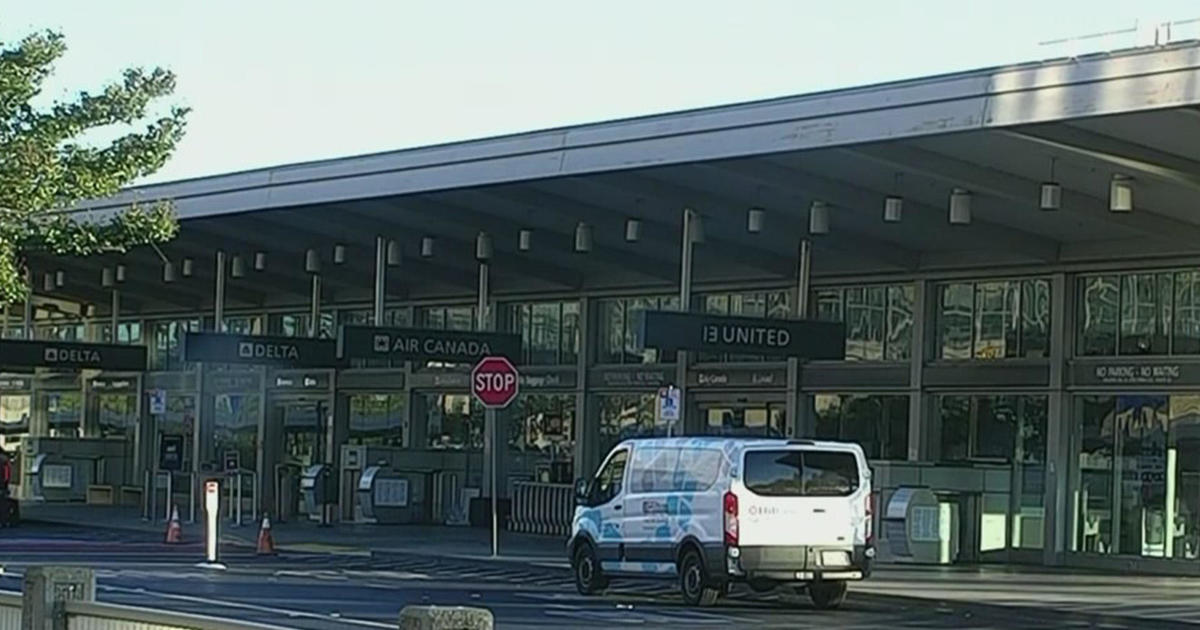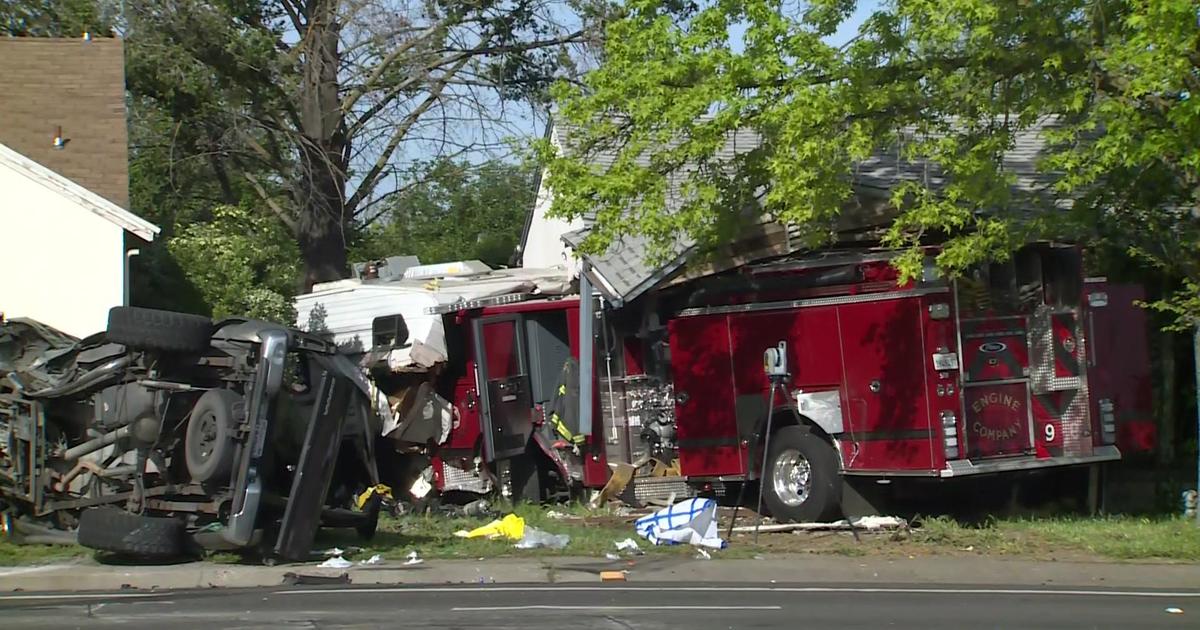Airliner Crashes On Landing At SFO; Flights Diverted To Sacramento International Airport
SAN FRANCISCO (CBS/AP) — An Asiana Airlines flight from Seoul, South Korea, crashed while landing at San Francisco International Airport on Saturday, forcing passengers to jump down the emergency inflatable slides to safety. It was not immediately known whether there were any injuries.
The airport has been closed as a result of the crash and more than a dozen flights have been diverted to Sacramento International Airport.
Federal Aviation Administration spokeswoman Laura Brown said Flight 214 crashed while landing at 11:26 PDT. A video clip posted to YouTube showed smoke coming from a jet on the tarmac. Passengers could be seen jumping down the emergency slides.
Television footage showed the top of the fuselage was burned away and the entire tail was gone. One engine appeared to have broken away. Pieces of the tail were strewn about the runway. Emergency responders could be seen walking inside the burned-out wreckage.
Stephanie Turner saw the plane going down and the rescue slides deploy, but returned to her hotel room before seeing any passengers get off the jet, she told ABC News. Turner said when she first saw the flight she noticed right away that the angle of its approach seemed strange.
"It didn't manage to straighten out before hitting the runway," she said. "So the tail of the plane hit the runway, and it cartwheeled and spun and the tail broke off ... I mean we were sure that we had just seen a lot of people die. It was awful.
"And it looked like the plane had completely broken apart," she said. "There were flames and smoke just billowing."
Doug Yakel, a spokesman for the airport, said he did not yet know how many passengers were aboard the flight. "We also don't have any information at this time to the status of those passengers," he said at a brief news conference.
Rachael Kagan, a spokeswoman for San Francisco General Hospital and Trauma Center, told KCBS radio in San Francisco that 10 passengers had been taken to the hospital — two children and eight adults, all in critical condition.
A call to the airline seeking comment wasn't immediately returned.
The National Transportation Safety Board said it was sending a team of investigators to San Francisco to probe the crash. NTSB spokeswoman Kelly Nantel said Saturday that NTSB Chairman Deborah Hersman would head the team.
Boeing said it was preparing to provide technical assistance to the NTSB.
Asiana is a South Korean airline, second in size to national carrier Korean Air. It has recently tried to expand its presence in the United States, and joined the Star Alliance, which is anchored in the U.S. by United Airlines.
The 777-200 is a long-range plane from Boeing. The twin-engine aircraft is one of the world's most popular long-distance planes, often used for flights of 12 hours or more, from one continent to another. The airline's website says its 777s can carry between 246 to 300 passengers.
The flight was 10 hours and 23 minutes, according to FlightAware, a flight tracking service. The aircraft is configured to seat 295 passengers, it said.
The last time a large U.S. airline lost a plane in a fatal crash was an American Airlines Airbus A300 taking off from John F. Kennedy International Airport in New York in 2001.
Smaller airlines have had crashes since then. The last fatal U.S. crash was a Continental Express flight operated by Colgan Air, which crashed into a house near Buffalo, N.Y. on Feb. 12, 2009. The crash killed all 49 people on board and one man in a house.
Flying remains one of the safest forms of transportation: There are about two deaths worldwide for every 100 million passengers on commercial flights, according to an Associated Press analysis of government accident data.
Just a decade ago, passengers were 10 times as likely to die when flying on an American plane. The risk of death was even greater during the start of the jet age, with 1,696 people dying — 133 out of every 100 million passengers — from 1962 to 1971. The figures exclude acts of terrorism.
But airline crashes remain in the public's memory much longer than a wreck on the side of the road. Flying isn't natural and crashes involve many fatalities, often accompanied with horrifying images.
Those in the airline industry often say that you are more likely to die driving to the airport than on your flight. There are more than 30,000 motor-vehicle deaths each year, a mortality rate eight times greater than that in planes.
There are still some corners of the world where flying is risky. Russia, the Democratic Republic of the Congo and Somalia have particularly high rates of deadly crashes. But America, Europe and Asia — with the exception of a few low-cost carriers — have remained very safe.
Asia remains one of the fastest-growing regions for aviation in the world. Even with slowing economies in Japan and China, airlines there saw 3.7 percent more passengers than a year ago, according to the International Air Transport Association.
Finding enough experienced pilots to meet a growing number of flights is becoming a problem.
A 2012 report by aircraft manufacturer Boeing said the industry would need 460,000 new commercial airline pilots in the next two decades — with 185,000 of them needed in Asia alone.
"The Asia-Pacific region continues to present the largest projected growth in pilot demand," the report said.
Copyright 2013 The Associated Press.



